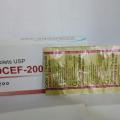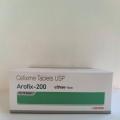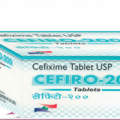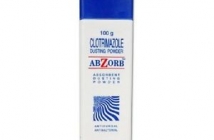Home / Categories / FIXIM-200MG
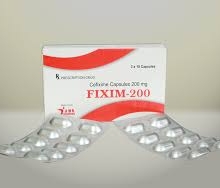
FIXIM-200MG
(10)
CEFIXIME-200MG
CEPHALOSPORINS
NATIONAL HEALTHCARE PVT LTD.
Product Details
Cefixime
A to Z Drug Facts
Cefixime
Action
Indications
Contraindications
Route/Dosage
Interactions
Lab Test Interferences
Adverse Reactions
PrecautionsPatient Care Considerations
Administration/Storage
Assessment/Interventions
Patient/Family Education
(SEFF-IKS-eem)SupraxClass: Antibiotic/cephalosporin
 Action Inhibits mucopeptide synthesis in bacterial cell wall.
Action Inhibits mucopeptide synthesis in bacterial cell wall.
 Indications Treatment of uncomplicated urinary tract infections, otitis media, pharyngitis and tonsillitis, acute bronchitis, exacerbation of chronic bronchitis, and uncomplicated gonorrhea due to susceptible strains of specific microorganisms.
Indications Treatment of uncomplicated urinary tract infections, otitis media, pharyngitis and tonsillitis, acute bronchitis, exacerbation of chronic bronchitis, and uncomplicated gonorrhea due to susceptible strains of specific microorganisms.
 Contraindications Hypersensitivity to cephalosporins.
Contraindications Hypersensitivity to cephalosporins.
 Route/Dosage
Route/Dosage
Infection
ADULTS & CHILDREN > 12 YR OR > 50 KG: PO 400 mg/day as single dose or two divided doses q 12 hr. CHILDREN 6 MO-12 YR: PO 8 mg/kg/day as single dose or two divided doses q 12 hr.
Uncomplicated Gonorrhea
ADULTS: PO 400 mg or 800 mg as single dose.
 Interactions
Interactions
Probenecid: Inhibition of renal excretion of cefixime.
 Lab Test Interferences May cause false-positive urine glucose test results with Benedict's solution, Fehling's solution, or Clinitest tablets but not with enzyme-based tests (eg, Clinistix, Tes-tape); false-positive test results for proteinuria with acid and denaturization-precipitation tests; false-positive direct Coombs' test result in certain patients (eg, those with azotemia); false elevations in urinary 17-ketosteroid values.
Lab Test Interferences May cause false-positive urine glucose test results with Benedict's solution, Fehling's solution, or Clinitest tablets but not with enzyme-based tests (eg, Clinistix, Tes-tape); false-positive test results for proteinuria with acid and denaturization-precipitation tests; false-positive direct Coombs' test result in certain patients (eg, those with azotemia); false elevations in urinary 17-ketosteroid values.
 Adverse Reactions
Adverse Reactions
GI: Nausea; vomiting; diarrhea; anorexia; abdominal pain or cramps; flatulence; colitis, including pseudomembranous colitis. GU: Pyuria; dysuria; renal dysfunction; reversible interstitial nephritis; hematuria; toxic nephropathy. HEMA: Eosinophilia; neutropenia; lymphocytosis; leukocytosis; thrombocytopenia; decreased platelet function; anemia; aplastic anemia; hemorrhage. HEPA: Hepatic dysfunction; abnormal liver function test results. OTHER: Hypersensitivity, including Stevens-Johnson syndrome, erythema multiforme and toxic epidermal necrolysis; serum sickness-like reactions (eg, skin rash, polyarthritis, arthralgia, fever); candidal overgrowth.
 Precautions
Precautions
Pregnancy: Category B. Lactation: Excreted in breast milk. Children: In infants, consider benefits relative to risks. Safety and efficacy in children < 6 mo not established. Hypersensitivity: Reactions range from mild to life-threatening. Administer drug with caution to penicillin-sensitive patients due to possible cross-reactivity. Pseudomembranous colitis: Should be considered possibility in patients in whom diarrhea develops. Renal impairment: Use drug with caution in patients with renal impairment. Dosage adjustment based on renal function may be required. Superinfection: May result in bacterial or fungal overgrowth of nonsusceptible microorganisms.
PATIENT CARE CONSIDERATIONS
 Administration/Storage
Administration/Storage
- Administer with food or milk if GI upset occurs.
- Suspension should be used in treatment of otitis media because it results in higher peak blood concentrations.
- At room temperature oral suspension will remain stable for up to 14 days. Do not freeze. Shake well before use.
 Assessment/Interventions
Assessment/Interventions
- Obtain patient history, including drug history and any known allergies. Note renal impairment and allergy to cephalosporins and penicillins.
- Obtain specimens for culture and sensitivity before beginning therapy and periodically during treatment.
- Monitor renal function carefully during treatment.
- Monitor for signs of infection, especially fever, and for positive response to antibiotic therapy.
- Assess for signs and symptoms of anaphylaxis (shortness of breath, wheezing, laryngeal spasm). Have resuscitation equipment available.
- Assess for symptoms of superinfection, such as vaginitis or stomatitis.
- Assess for severe diarrhea with blood or pus, which may be symptom of pseudomembranous colitis. Symptoms may occur after antibiotic treatment.
OVERDOSAGE: SIGNS & SYMPTOMS Seizures
 Patient/Family Education
Patient/Family Education
- Instruct patient to complete full course of therapy.
- Remind patient to check body temperature daily. If fever persists more than a few days or if high fever (> 102°F) or shaking chills are noted, physician should be notified immediately.
- Advise patient to maintain normal fluid intake while using this medication.
- Advise diabetic patient to use enzyme-based test (eg, Clinistix, Testape) for monitoring urine glucose because drug may give false results with other tests.
- Instruct patient to report these symptoms to physician: nausea, vomiting, diarrhea, skin rash, hives, muscle or joint pain.
- Instruct patient to report signs of superinfection: black “furry” tongue, white patches in mouth, foul-smelling stools, vaginal itching or discharge.
- Warn patient that diarrhea that contains blood or pus may be a sign of serious disorders. Tell patient to seek medical care and not to treat at home.
- Instruct patient to seek emergency care immediately if wheezing or difficulty in breathing occurs.
Books@Ovid
Copyright © 2003 Facts and Comparisons
David S. Tatro
A to Z Drug Facts
